Palace of Dreams

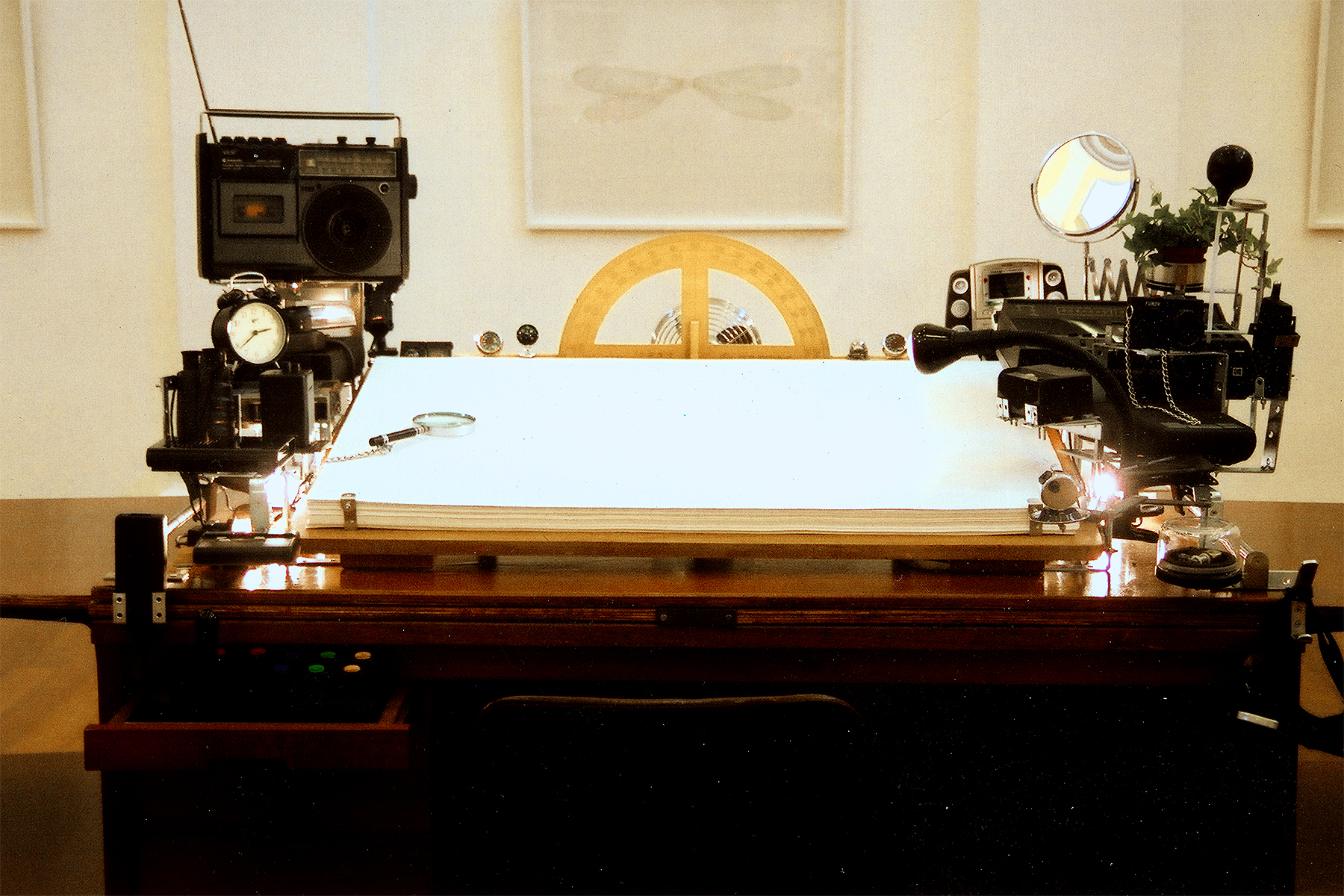
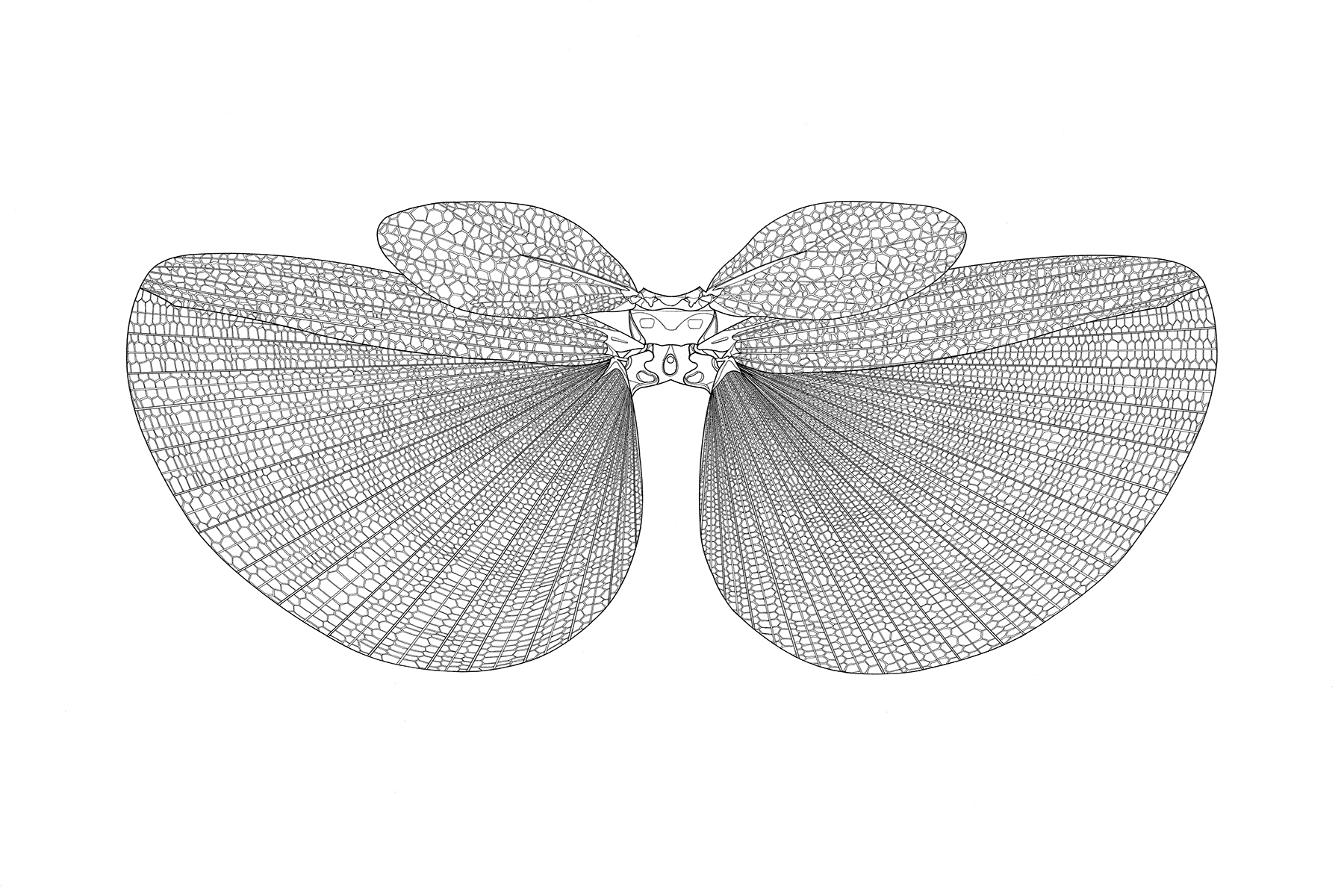
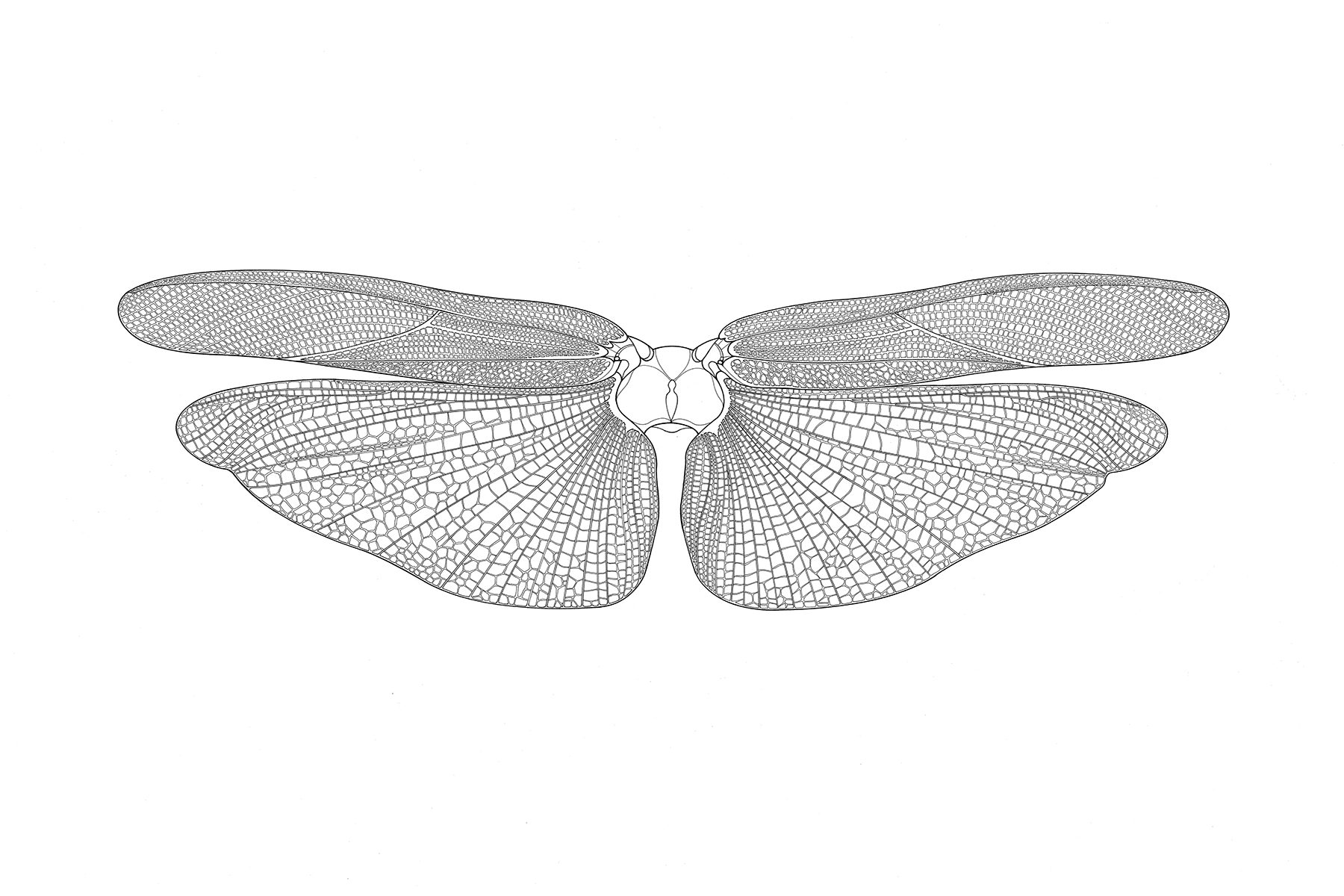
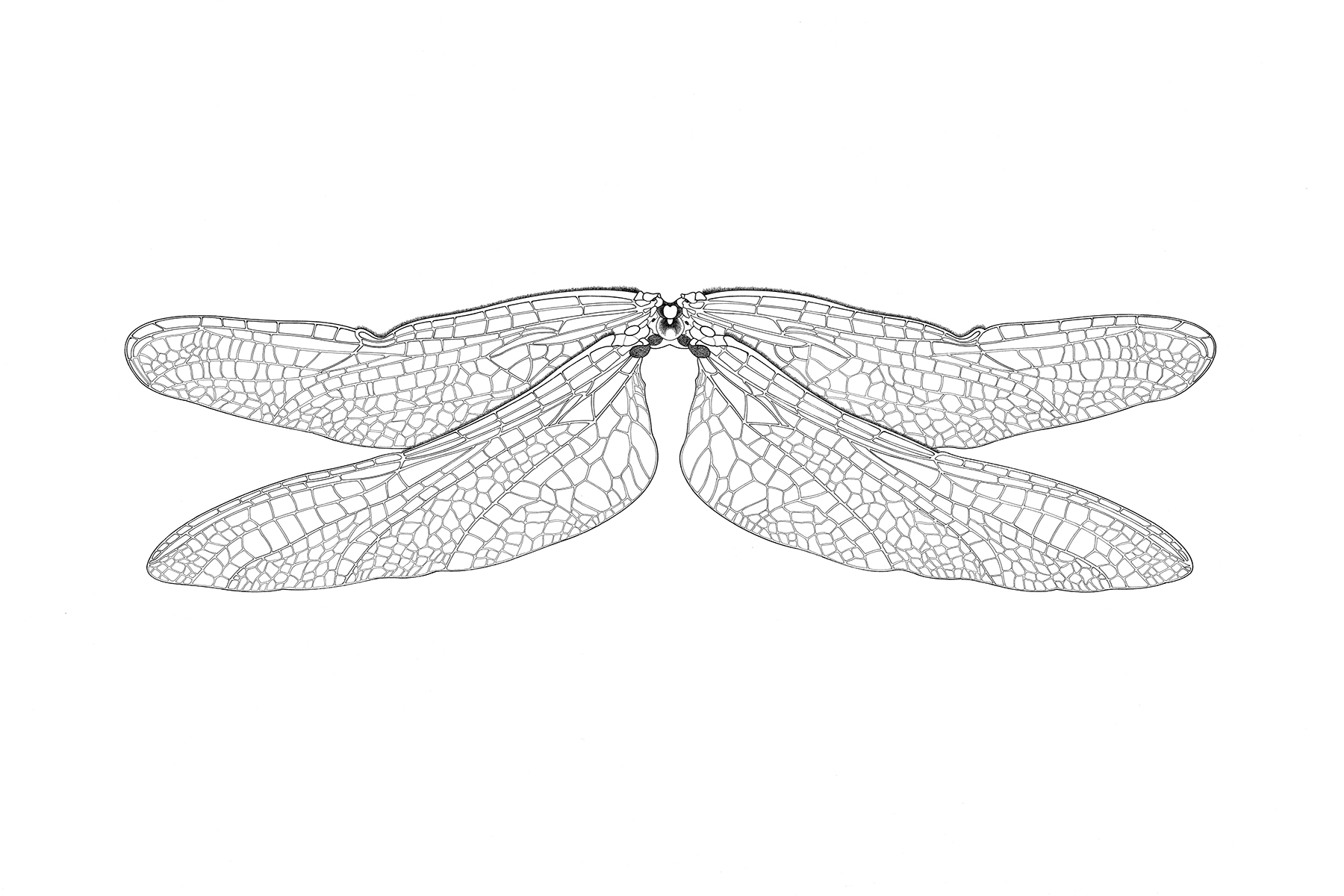

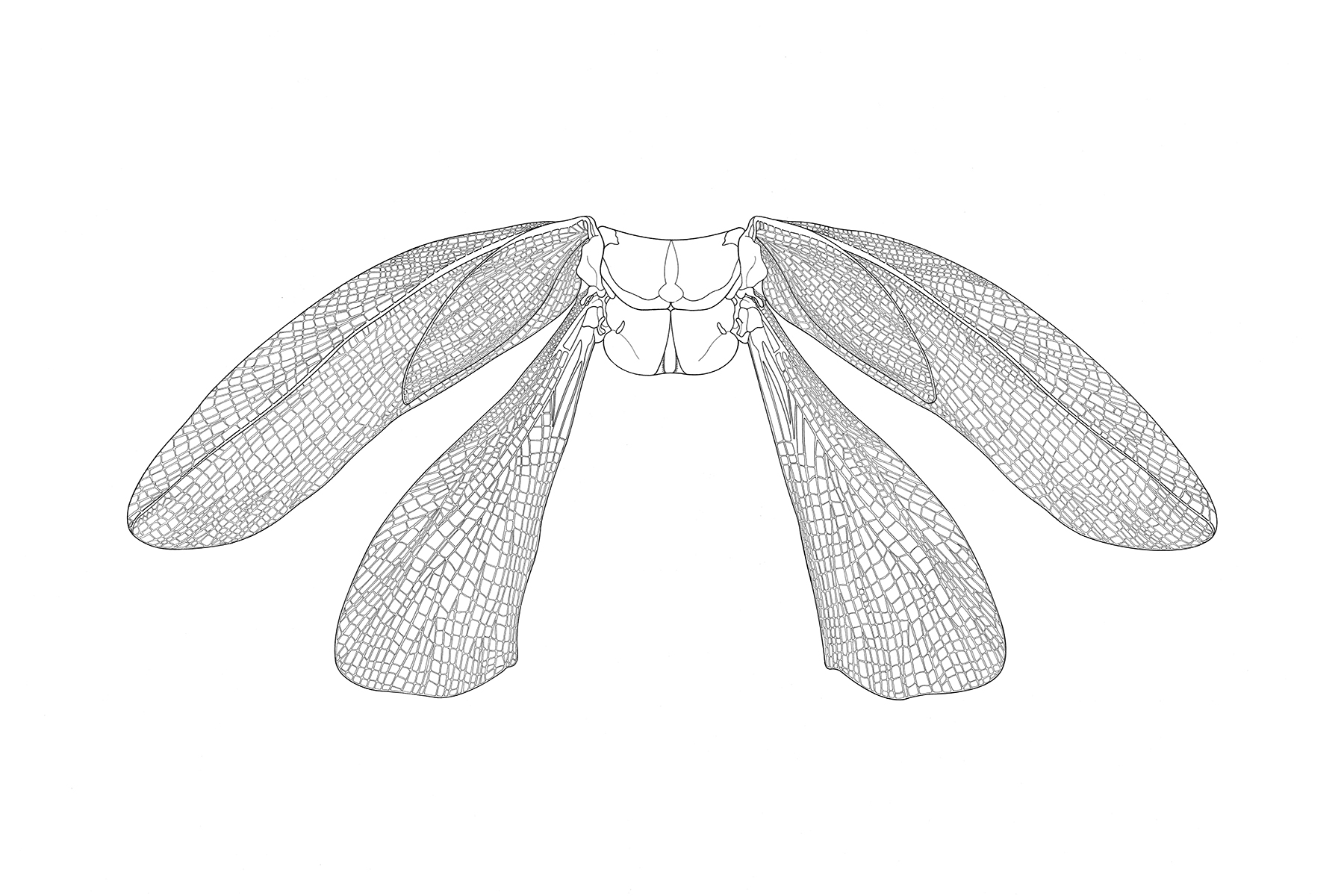
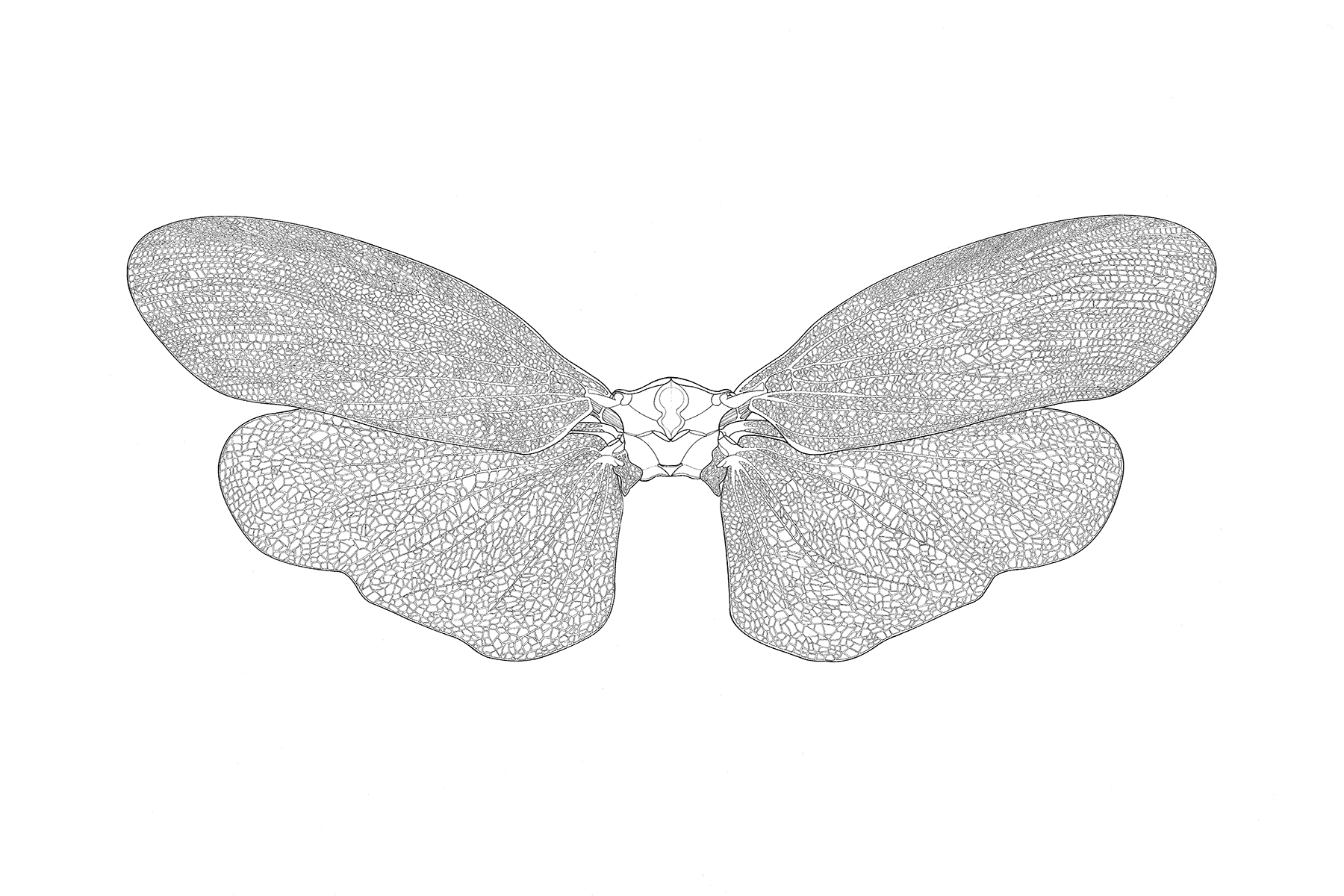
Palace of Dreams | 2004
- Size
- Desk (1.7 x 0.8 x 1.2)m and 24 Drawings (100 x 91)cm each
- Medium
- Wooden desk, chair and wings, metal struts, paper, stationary and other found household objects.
- Exhibition
- The Arts House at the Old Parliament (3-15 Nov 2004), “Palace of Dreams”, Singapore
The art installation features 2 works – 24 technical drawings of insect wings and a desk that has been transformed into a plane - that explore and communicate the desire to recover a lost childhood dream. Susan Stewart in her book, “On Longing – Narratives of the Miniature, the Gigantic, the Souvenir, the Collection,” theorises that in seeking to evoke memories of childhood, the past is reconstructed from what presently exists. Thus the objects in the exhibition though they resemble childhood objects –drawings and childhood games - cannot be mistaken as objects made by or for a child. They are reconstructions of remembered childhood craft activities - drawing, cutting, pasting, etc – a child’s game taken too far, played much too seriously by an adult
The artwork explores the idea of faith and hope - especially the kind that is unlikely to be rewarded. The investigations work backward from what is commonly thought: that faith; hope in a specific result, spurns behavioural action, eventually leading towards the desired end. In this work, an unattainable object/outcome (e.g. becoming a pilot) is first fixed, then a course of action, indicative of belief in the outcome, is performed with the eventual goal being the arousal of feelings of true faith and hope.
The philosopher Hegel states that desire is based on the gap between need and demand, which is then bridged through “mediation”. This explains the exhibition’s elaborate working ethos - the intensive and laborious nature of producing the hand drawn technical illustrations, and the transformation of the desk into the plane, are in themselves a form of mediation that seek to visualize this hidden desire and bring it to some sort of fulfillment or completion.
The technically precise aesthetic of the drawings as well as the subject matter of insect wings seemingly belong to the adult world of science and technology. Yet insects also possess secret links with the imaginary. Poems such as Milton’s Pandemonium-beehive as well as John Clare’s sonnet2, suggest the idea of fairies may be only an anthropomorphising of insects. Indeed, many of our illustrations of fairies depict them with the gossamer wings of insects. Fairies embody fantasy, control and childhood, hence an appropriate subject matter for illustrating an adult desire to regain a remembered childhood hope.
